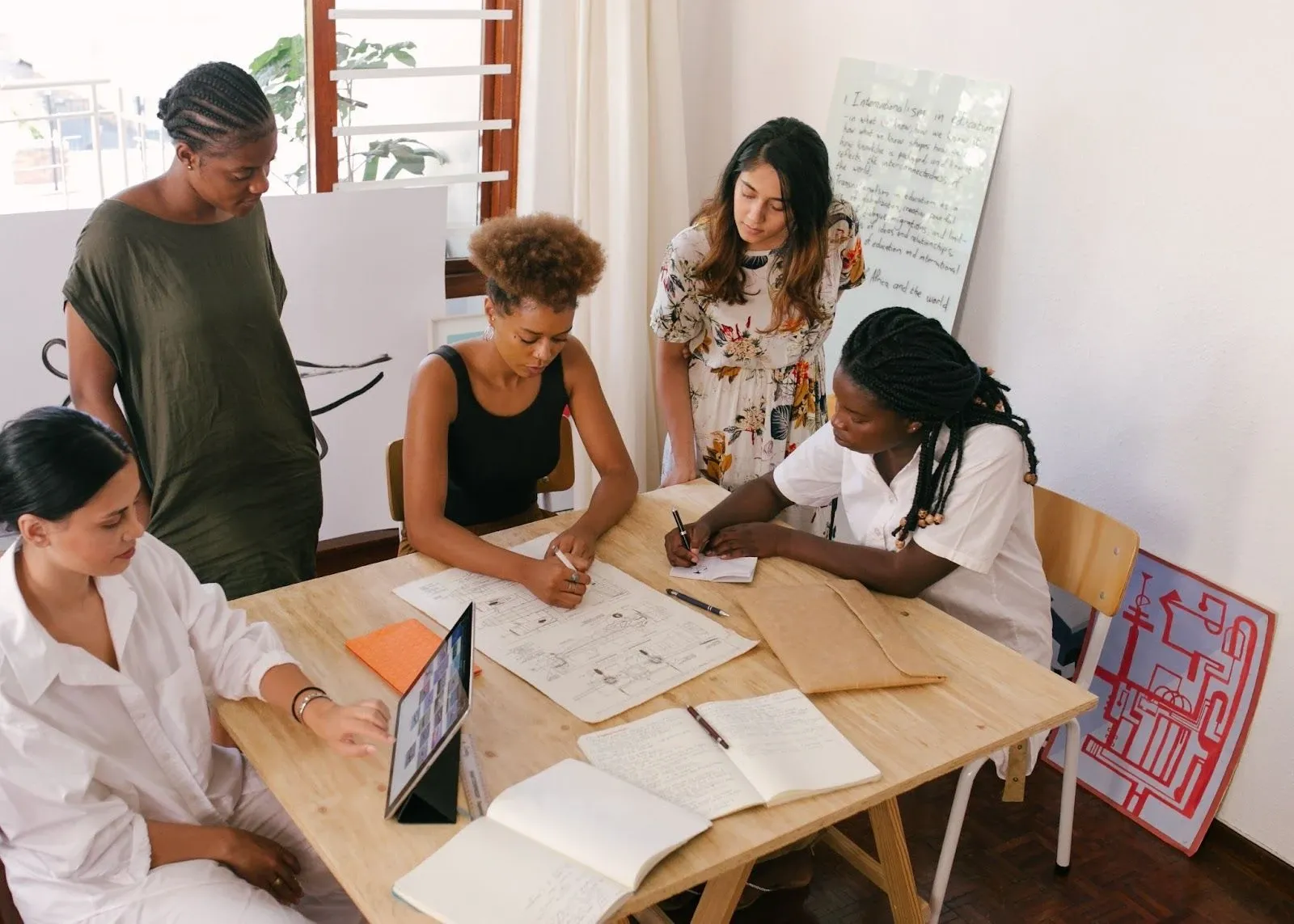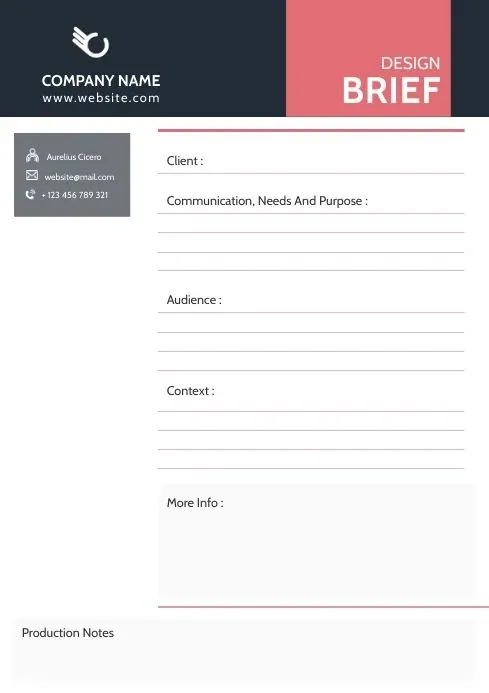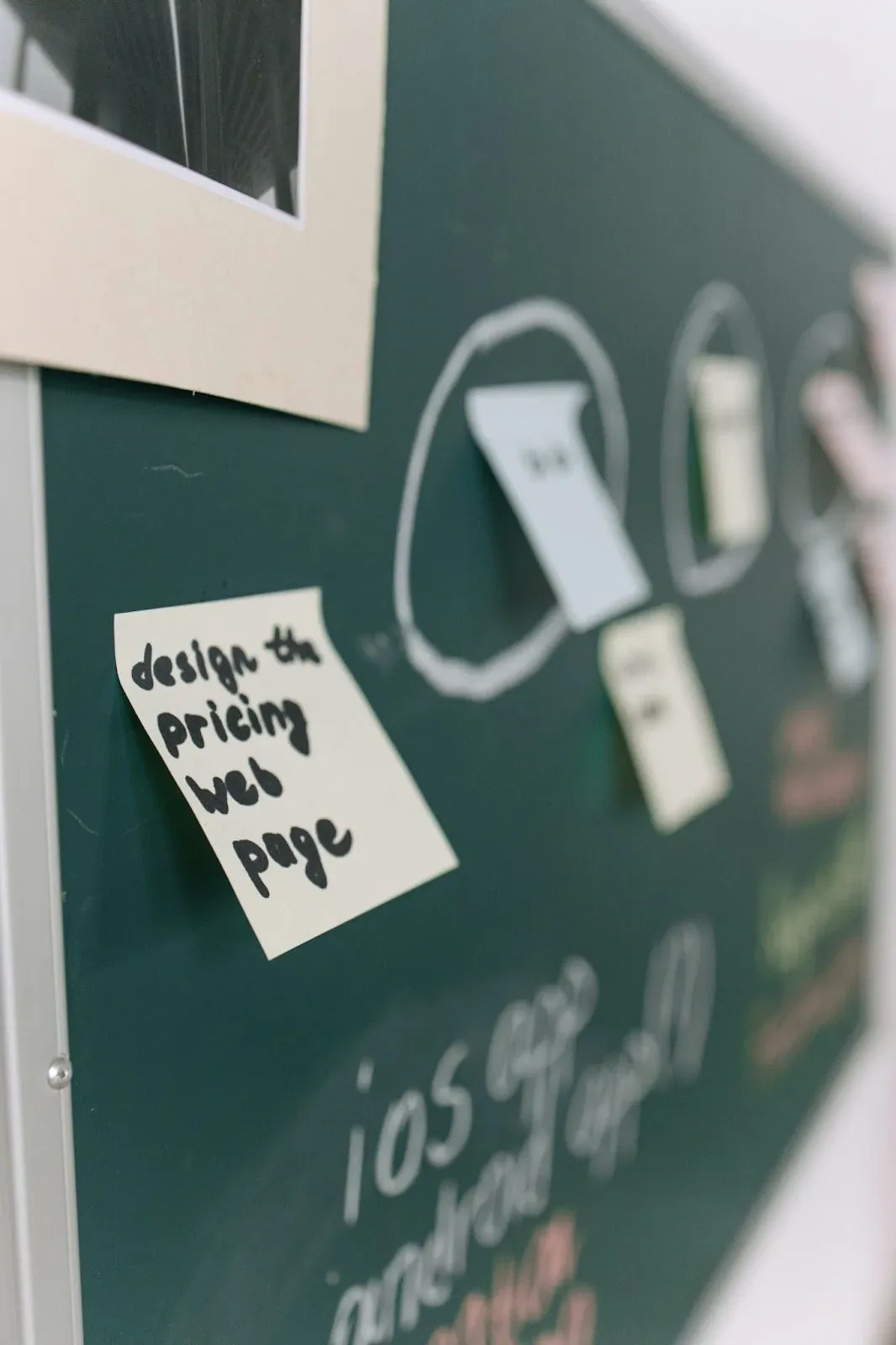
8 Elements Needed In A Good Design Brief

Image from Pexels
A good design brief is one that puts together a plan to help you understand the road ahead in your design project. When you write a good brief, you'll know just what you need to do to plan, carry out and complete the task at hand. Not sure how you'll go about this? If so, then you're in the right place. Here's everything you need to know about writing the best possible design brief.
What Constitutes A Design Brief?

Image from Pexels
Before you can write a design brief, you'll need to know exactly what one is. What should you be including in your brief to make it as successful as possible?
Essentially, your brief should outline what's expected of the project in question, and show how it will meet the guidelines that the brand has set. When you have a good brief in place, it ensures that everyone is on the same page and that the final result will be what everyone was looking for.
There will be several important elements contained in a good design brief. That will include a section explaining why the design is necessary, whether that be because it will better benefit your audience, move your brand forward, or otherwise make the brand more competitive overall. There will be sections covering things like budget, deadlines, and other details which will be covered below.
The Importance Of A Good Design Brief
It's hard to overstate just how important it is to write a top-class design brief. When you take the time to write one and put all your plans in place, it ensures that you'll be creating a top-class product at the end of the project.
There are several benefits that you can take advantage of when you have a brief in hand. Firstly, it helps foster better relationships with your client. When there's a clear brief, they'll have more idea about what's happening on your end, and what you're doing. They'll also have a great idea of what you're doing in order to achieve that outcome, so you'll be fielding fewer questions from them overall.
When you put together that brief beforehand too, everyone involved will be very clear on the budget and timeline of the work involved. You can work with the client on this beforehand, so you can both agree on these terms before you get to work. That will minimize any confusion or disputes later on.
Finally, having that brief means that you have a document that you can keep coming back to. It'll act as the blueprint for your project, so if you're ever unsure or don't know what to do next, it should be included in this document.
Who Should Write The Design Brief?

Image from Pexels
The next question you'll have is, who should be writing this brief? You'll usually see that it's a collaborative process between the client and the design company. That's because both parties are important in the project's creation, and so they both have a say in how it should go.
The client will have the main idea for the project, and then the design company will work with them to create a brief that will meet those ideas and make them a reality. “This works because the client will have the idea of what they want, but not how they would make it a reality,” says business writer Fiona Small, from Best British Essays and Elite Assignment Help. “As such, the design team can help formulate a plan to bring that idea into reality.”
8 Elements To Include In a Design Brief

Image from postermywall
You now know all the basic details that you need for a design brief. Now, it's time to write that brief in detail. What kind of things need to be included? Here are the important elements that you'll need to keep in mind.
1. Company Overview
The very first thing you'll need to do in your design brief is to do an overview of the company you're creating the project for. This is an essential part of the brief, as it shows the client that you understand them and their brand. When you have this understanding, you'll then be able to create something that really gives them what they're looking for, and fits in with their existing image.
Usually, you'll want to include the following aspects in this section:
- How large the company is
- The company's contact info
- Past projects you've done for this company
- Their current design needs
You can look into the company to get a good idea of who they are and what they do, so you'll be able to offer a good final product. Ask yourself what's unique about their brand, and ensure you know what brand guidelines they have. You'll also want to know what kind of themes are common in their brand, so you can work with those.
Once you have an overview in place, everyone involved in the project will have a summary of the company that they can refer back to. That will also show the client that you understand what they do and who they are, giving them more confidence in your work and end product.
2. Design Goals And Objectives

Image from Pexels
If you're going to be putting a project together, you'll need to know what the end goal is. This is something that the design team and the client will work on together. What is the overall purpose of the project? What is it that you all hope to achieve with the end result?
When creating this section, you'll need to outline your goals in detail. Lay out the exact purpose of the project, and the steps you need to take to reach those goals.
Again, there will be several things that you need to keep in mind if you're looking to do this. What would make this project successful? How will you measure success, and know if you've reached these goals?
A good way of writing this section is by using the SMART method. This will help you set goals that are reachable, and will give you the best results.
3. Project Scope
Now you'll need to include a project scope section in your design brief. This is potentially one of the most important parts of the brief, as it will outline just what will be involved in the project, the reason why the work is being done, and the roles that every person involved will be assigned.
When creating this section, you'll need to both agree on the exact scope of the project. What exactly will need to be done in order to get the results you're looking for, and reach those above goals? When you agree on this now and put it in writing, it's something that everyone can refer back to.
You'll also want to define what exactly is in the scope of the design, and what's outside of it. If you know this now, then you'll avoid scope creep from happening and creating extra work that won't benefit the project as a whole.
4. Budget And Timeline
This is again highly important to include in your project brief. You need to have an agreed budget for the project, one that both the client and the design company are happy with. This will need to be negotiated as you create the brief until you land on a number that you're both happy with.
When creating that budget, you'll need to leave room for any unexpected setbacks or extra costs that may be incurred. These can happen, and if there's money in the budget for it, then it shouldn't be too much of a problem if they need to be addressed.
At this point, you'll also need to agree on a timeline for how long the job will take. “It's important that you're realistic about how long the work will take” says Jason Marston, a project manager at Revieweal and UK Services Reviews. “That way you'll manage expectations and be sure that you'll budget correctly for the time it'll take.”
5. Project Deliverables
In your design brief you'll need to understand what your project deliverables will be. As you've been working out the plan for the project in the brief, this shouldn't be too difficult. You have all the information to work out what your project deliverables will be, in detail.
What your deliverables are will depend on the size and scope of your particular project. Creating this list within the document again ensures that there are no misunderstandings on either side, and you'll both see exactly what will come out of the work that's done.
When creating this section, think about what the result of your work should look like. What major milestones do you expect to hit throughout the project?
6. Competitor Analysis
This is a section that you mustn't neglect to include. Every company will have competitors that they're working against, and the design work done for them should help them get the edge. If a design company is going to help them do that, then they need to know what the competition is doing.
In this section, you'll be looking at similar work that the company's competitors have done, and analyzing it. Did their work help them succeed, or did this particular project fail? What exact outcome came of this campaign? Having that analysis means that you have an already completed project from a similar brand that you can learn a lot from.
In your analysis, make sure that you're looking at who the competitors are, what they've succeeded at in the past, and what makes the client stand out against the other brands out there. When you have this information, you'll be able to create something unique.
7. Target Audience
When you're creating a project for a client, you need to understand who the audience is. They're the people that you're trying to target, so any work you do will be centered around them and their needs.
When working with a client, they may well have customer personas that have already been researched. That's great if they do, as you'll have a good idea of who their audience is and what they're looking for from this brand. That's a great place to start, as you'll be able to build a project around them.
If you don't have customer personas to hand, then you'll need to do the research into the audience before you can do anything else. You'll need to ask questions such as, what hobbies does the target audience have? Where are they online? What are their demographics? What are they looking for from this brand?
Ensure that you include all of this information in your design brief. When you have it in writing, it's great to check back on when you're considering your next move. Would your plan be received well by your target audience?
8. Existing Assets
When working with any brand, they very likely will have some assets that are ready and waiting to be used. This can be anything from brand colors to logos and site designs. This is usually the case with them unless they're doing a full brand overhaul.
In your design brief, you'll want to have a full breakdown of the assets that are already done and on hand for you to use. In most cases, there will be some things that the brands will want to be used. The logo, typeface, or colors will be instantly recognizable as from that brand, so they'll need to be included.
When you have that full list on hand in the brief, you know what you have to hand as soon as you start the project. That will make starting easier, as you'll be able to work with those assets to create something new.
Conclusion
There are lots of things that you'll want to include in a design brief, but it's worth the time and effort to do so. Once you've put together the brief and all parties have agreed on it, you have a document that you can go back to time and again for all the details you need.



